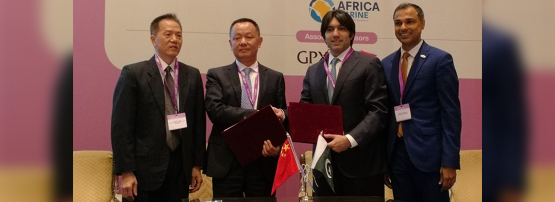
Pakistan is set to secure and boost its Internet connectivity as it welcomes its seventh submarine cable later this year.
Spanning three continents, the 15,000km PEACE cable (Pakistan & East Africa Connecting Europe) will provide the lowest latency service from Pakistan to Europe — 89ms between Karachi and Marseille in France — which will be available to all local operator, content provider or IT firms.
The PEACE cable will be carrier-neutral throughout its planned route, however, due to certain limitations in Pakistan, a minimum fee will be required for members to connect to help with the building and maintaining of the landing station.
Backed by local partner, Cybernet, the cable will not only ensure greater Internet speeds but much needed redundancy to Pakistan’s Internet backbone.
“In comparison to our neighbour, Oman, which has 14 submarine cables servicing a population of less than five million, the PEACE cable will take some of the load off a network that is currently servicing more than 70 million mobile and fixed Internet users,” says Maroof Ali Shahani, COO of Cybernet.
Fibre provides foundation for telecommunication industry
Cybernet, a part of the Lakson Group of Companies, is amongst Pakistan’s oldest ISPs.
Like many original ISPs, it’s had to adapt its focus over the years to carve out a share of the fledgeling market, and in doing so, has become the leading fibre to the home (FTTH) broadband service provider for both enterprises and home users.
“We began offering fibre to our enterprise clients in 2007 and then around 2015 we expanded to offer a triple play service — TV, telephone and Internet, over GPON — to home consumers,” explains Maroof, who’s been with Cybernet from the beginning of its FTTH project.
“Instead of using the enterprise network, which also uses GPON, we built a parallel network dedicated for residential users with separate OLTs, distinct local metro rings so that we can offer different Service Level Agreements for our different types of customers. In recent years, we’ve also added wireless services too because customers require several backups to fibre.”
Although FTTH still remains a relatively expensive means for the vast majority of Pakistan to connect to the Internet, Maroof says it is providing an important foundation that is and will benefit the evolving “telecommunication ecosystem”.
“Fibre infrastructure is not just required for fixed-line consumers but enables mobile broadband as well because you have to turn on the PTS (photonic transport system) and backhaul. Even small cells you have to connect through the fibre backhaul,” says Maroof.
Read: The Internet landscape in Pakistan
“Mobile operators used to believe that microwave technology would be able to do this but now it’s common knowledge that we need the bandwidth that fibre provides to serve the PTS. This is going to be the same for connecting IoT and other wireless devices in the future too.
“If we don’t have a fibre backbone, or data centres — another recent venture of Cybernet’s — we can’t sustain the telecommunication ecosystem we’re all working to develop.”
Read: Why is so much Internet traffic leaving Pakistan?
It takes a community to drive development
Perhaps the largest foundation that Cybernet is laying, though, is a human one.
It’s synonymous in the local and regional community as a ‘nursery for network engineers’ with the likes of the Internet Society’s Senior Manager of Internet Technology and MANRS proponent, Aftab Siddiqui, and APNIC’s newest trainer, Muhammad Yasir Shamim, starting their careers at the company.
“A lot of people have worked here over the past 22 years, gained valuable experience, and moved on to other companies or start their own, locally or globally. And we are proud of all of those people,” says Maroof.
“My passion is developing the community. It used to be technology but now I see that technology is useless unless we can develop a workforce that can deploy and maintain it.”
Read: Trust, neutrality keys to sustainable Internet exchange, Pakistan
Technologies such as autonomous vehicles and Artificial Intelligence are so broad spanning they require experts from various sectors to come together to understand how they will operate. This is where Maroof sees the value of Network Operator Groups (NOGs), such as SANOG. NOGs bring together professionals from the industry to share and learn how to implement networks that will support new technologies and showcase the potential of the local workforce to international attendees.
“The ultimate reason my CEO (Danish Lakhani) and I have stayed in Pakistan is because we want to do our part in serving our country,” says Maroof. “We want to support the people the government and the community as a whole, which includes assisting with broad-scale initiatives such as the Digital Pakistan Initiative.
“It’s good to see other telecommunication service providers are starting to invest more money and interest in generating a valuable and talented workforce. This will mean more ex-pats from the industry will return to Pakistan since they are being paid for their skills which, in turn, means that more foreign companies will invest in Pakistan.
Foreigners do see the potential in our industry but want confidence, and initiatives such as the PEACE cable will assist with this. We hope this is one of many steps to make Pakistan one of the most technologically-driven communities in the world.”
The views expressed by the authors of this blog are their own and do not necessarily reflect the views of APNIC. Please note a Code of Conduct applies to this blog.
